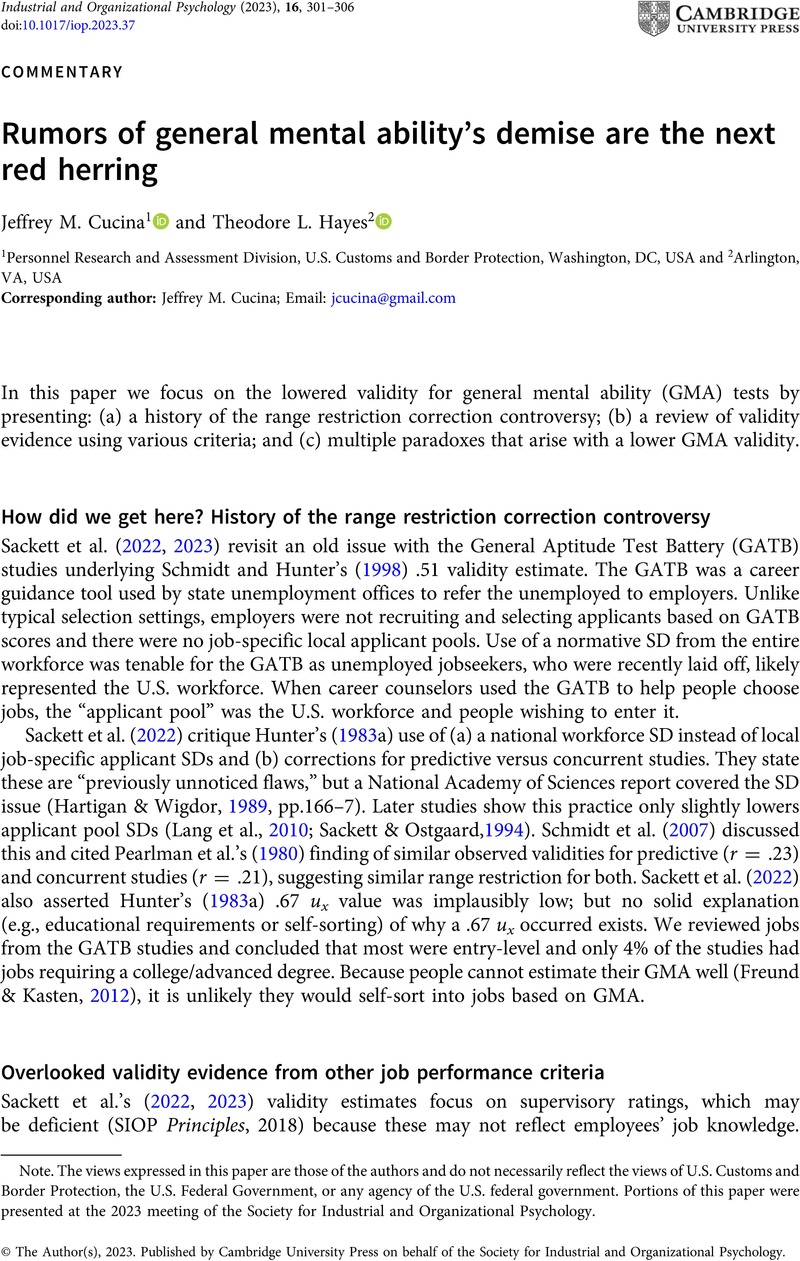Crossref Citations
This article has been cited by the following publications. This list is generated based on data provided by Crossref.
Cucina, Jeffrey M.
Burtnick, Scott K.
De la Flor Musso, Maria E.
Walmsley, Philip T.
and
Wilson, Kimberly J.
2024.
Meta-analytic validity of cognitive ability for hands-on military job proficiency.
Intelligence,
Vol. 104,
Issue. ,
p.
101818.
Bobko, Philip
Roth, Philip L.
Huy, Le
Oh, In‐Sue
and
Salgado, Jesus
2025.
The need for “Considered Estimation” versus “Conservative Estimation” when ranking or comparing predictors of job performance.
International Journal of Selection and Assessment,
Vol. 33,
Issue. 1,
Cucina, Jeffrey M.
2025.
Reconsidering the search for alternatives to general mental ability tests.
Intelligence,
Vol. 109,
Issue. ,
p.
101892.



